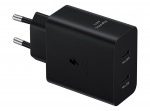
Baldur’s Gate 3 is not the only D&D-based cRPG doing very well on Steam Early Access. There’s also Solasta: Crown of the Magister, developed by the Paris-based studio Tactical Adventures after a successful crowdfunding campaign on Kickstarter that saw €243K in pledges from backers. Solasta debuted on Steam Early Access in late October 2020 and immediately garnered acclaim from gamers, with an overall user review rating of 93%.
Later this month, the developers will release a dungeon maker tool that should greatly extend the game’s replayability factor. Ahead of this tool’s public release, we had the chance to speak with Tactical Adventures founder Mathieu Girard (who was a co-founder of Amplitude, the studio behind Endless Space) community lead Emile Zhang, and communications manager Pierre Worgague.
It’s a lengthy chat, make no mistake, but also one that delves deep into what the dungeon maker can and cannot, at least for the time being, do.
Can you introduce yourself?
Mathieu Girard: I’m the founder and lead for everything in the studio. I’ve always been a big fan of D&D, and I just had this crazy idea of making a D&D video game. I really wanted to do a great tactical experience with the D&D 5th SRD. I’ve done many games in the past, I worked at Amplitude before, at Ubisoft, and this is the game I’ve wanted to do for 20, 30 years maybe. We are a small team in Paris, about 18 plus lots of great partners, but with great experience, tools, and stuff. We are very proud of what we’re doing with the team we have, and it’s a blast to work every day together. Even though we have the COVID, we actually have five people in the studio today, using masks when close to another. But otherwise, we will be working from home. We managed to do fine so far in the context.
How many developers do you have in total working on Solasta?
Mathieu Girard: We have 18 in the studio, and I would say maybe 10 more working on additional art, on the UI, on QA, sounds, music, etc. These are external partners with whom we have developed a long-term relationship. So I would say close to 30 in terms of the actual workforce for the project.
Can you give our readers an extended overview of Solasta and its upcoming dungeon maker tool?
Mathieu Girard: As you know, we are doing a tactical RPG with a strong adventure component. Solasta is really putting forward the combat in a tactical way. We use a lot of verticality and dynamic environment lighting because it’s more interesting and because it’s a way to implement 90% of the D&D 5th Edition rules in the game. It’s also something we had as very positive feedback, how faithful we are to the 5th edition ruleset, spells, etc. It’s a big plus of the game. We also tell the story slightly differently from other cRPGs. Instead of being the main hero with henchmen joining in progressively, you actually start Solasta by creating a full party of characters. Basically, like on a tabletop game, which is a big reference for us, you play the team instead of just being one character. Your job is to create a team of complementary characters or not (if you want to play four halfling fighters, that is perfectly possible, but you can also complement each other with different skills and abilities). The game features a single player campaign, which is already available in early access. We have about 20 hours of gameplay in the early access right now, and we are constantly adding new content.
We’re not far from the end, but we cannot commit to a release date yet. But anyway, the Early Access was great; we love working with the community. We had tons of feedback on the UI, the balancing, etc. That really allowed us to perfect the game. We’ve been releasing updates on the early access, and we’re about to release a new one this month with new content and features. The thing we’re going to speak about today is the dungeon maker. Ever since Solasta was announced, we had people asking us ‘Can we create our own adventures within Solasta?’. It was a very important thought because, for this kind of game, people want to recreate the tabletop experience, so we saw this through and it was complicated to give our development environment to the users. We use Unity and using that and all our tools, it’s like a full-time job. It’s people from the industry who can use that. But for everyone else, it would be just too hard, too frustrating, and too cumbersome to use. We let go of this and said we didn’t have time and we hoped that maybe the modders could hack into the game to do it themselves. Then again, I thought maybe we could still do something. So I spent my Christmas vacation trying to find a solution, I built a quick prototype. The idea is to do a very simple editor. The big references for us are Lego. You just drag and drop bricks and connect them. Also, since the editor is inside the game, you don’t have to download an SDK or texture sets or do complex scripting as everything is based on visual scripting.
Another reference could be LittleBigPlanet, where you create content inside the game instead of relying on an external tool to do so. Also, obviously, a big reference is Neverwinter Nights, which allowed users to create lots of adventures, etc. But to me, that would still be too complex to use because you have to do some scripting, etc. We wanted to start small. For now, we just have one environment, which is the Necropolis, an underground cave with tombs and stuff like that. You can also select the size of the dungeon, how many cells it has, and then you can also select your music. Then it’s all about placing rooms. You have a selection of room shapes that you can place and then props which allow you to add furniture, like columns or rocks. These are not interactive. It’s just for decoration, but they do block pathfinding in some situations, so you have to be careful.
And finally, you have gadgets, which are interactive components. For example, you can have a door that blocks a tool, chest. And for these gadgets, you have a simple addition system, which allows you to select parameters. So if you put a door and it’s locked, how difficult is it to unlock the door for the characters. It goes the same way for monsters, in administering loot, you can select items you want to have in your chest. We do not allow you to create new items yet, but we draw on the full database of Solasta. That means the full campaign database of monsters, items, traps, etc. And then you can select it for your gadget to quickly edit something. You can add lore plates so when you step on those, it’s going to display text. And we also have 3D snapshots on the left so that the user can better understand what is created without launching the game right away. In the future, we also plan to add a quick preview that shows that in 3D with lighting so that you can really quickly, without launching the game, see what your dungeon looks like in 3D.
Given the importance that you’re placing on verticality in Solasta, will there be a way for dungeon makers to replicate some of that?
Mathieu Girard: Not yet, because I’ve prioritized simplicity first. When you go with a 3D editor, you’re going to lose 50% of the users who can create content. We’re thinking of adding some verticality props like platforms, stuff like that, or maybe rooms with gaps in it. And then again, we will be driven by the community’s wishes. If they say we need to have 3D, maybe we can go, I don’t know, with an isometric perspective for the dungeon maker tool. It could be like an expert mode for the dungeon maker because most people want to use 2D first.
Emile Zhang: During the Kickstarter for Solasta, we had many people asking for a dungeon maker. One of the biggest issues was that the complexity was a little bit too harsh, as Mathieu said. We actually discussed with many modders from Pathfinder Kingmaker, for example, as that game used Unity as well. At first, we wanted to give the modders some kind of advanced SDK tool that they could load into Unity and make their own dungeon using our tools. That would include the verticality you were asking about. But the problem is that it was so complex that even the modders themselves told us that this would require someone to know how to code video games, meaning that it would be too harsh of an entry barrier. That is why Mathieu prioritized making a simple tool and then working on top of it to add new features on the go, depending on what the users will ask for. For example, we already know a lot of users are asking us for a dialogue system so that NPCs can talk to us and we can add NPCs to dungeons outside from monsters. We also know that they would like a quest system so that NPCs could also give you a quest and you have specific quests in your dungeon. So maybe, as you said, the verticality will come in because it’s a huge part of Solasta. We will take a look at how to include that in a simple enough manner so that it is still interesting to use it. But at the same time, it doesn’t lose half of your modders when you introduce this feature.
Mathieu Girard: We have a backlog of evolutions for this tool, with lots of cool ideas. It’s just a matter of how much time we have and what the community wants to do first. This is why we are going to release this dungeon maker with the next update in the early access to get early feedback and to really adapt. Do they want, above all, new environments? Like caves or forests, etc.? Or do they want new features? Specifically, that’s what we want to listen to.
I’m wondering how much you can tweak the creatures through the dungeon maker in terms of their level, their hitpoints, stuff like that.
Mathieu Girard: For now, we reuse the contents of Solasta internally. Again, if people want to have some kind of override, we can look into it. Everything is possible in code, it’s just a matter of how much time it takes.
Emile Zhang: Right now, when you create a dungeon, it’s a simple JSON file, so it’s super easy to share with other players. The reason for that is, as Mathieu said, we only use content from the game so people don’t need to download anything additional, it will just go and seek the content of the game. As long as you have the game installed, you can quickly launch a dungeon. It’s super fast to load, and it means that you can use pretty much all the game content. As you said before, some players may want in the future to take this wolf and say I want that wolf to have 27 HP instead of 22 for some reason. And for the moment, as Mathieu said, we do not support that. But what we have seen already during the early access of Solasta is that players have been able to mod the game and add new classes, new feats.
I wouldn’t be surprised if some will add new monsters, or tweak monsters, or even add new items. And that’s also something that some people have asked, whether they can put their homebrew magic items in their dungeons. Can they do that? Officially, no, but using mods, maybe. Again, we’re not making any promise because we’re not the one making the mods, the modders are, but considering what we’ve already seen, it wouldn’t be too surprising. Maybe there’s a future where modders have a tool that can just tack on Solasta and then be able to not only make the dungeons with our tool but on top of that, with their own mods, be able to add custom monsters or custom items. But again, that would imply that anyone playing the dungeon would also have the same mods as they do. So it’s the same as with games that have multiplayer with mods. Usually, if you want to be on the same server and have everything work, everyone needs to have the same mods, which is a little bit complex. But you know, maybe it’s a possibility. And like Mathieu said, maybe we even will add that in the future ourselves. It depends on what the players actually asked for.
Note that as we said before, the main game is still our number one priority, so for launch, we will have the dungeon maker available in a beta state, but post-launch we do plan to add a lot of new features to the dungeon maker (provided that people actually use it, of course).
Mathieu Girard: What’s interesting is that we have exit points we can place in a dungeon. Instead of going back to the menu, you can specify another user location, another JSON file, and then it’s going to load another dungeon. With this system, it’s possible to make your 20-levels dungeon with different challenges and monsters. Right now we have just the Necropolis, but once we add different environments, you can simulate a castle with its basement and catacombs and Necropolis, etc.
Basically like an endless dungeon.
Emile Zhang: Yes. And on top of that, because it’s so simple right now, you can easily also collaborate with other players to make different maps that are then linked together. You can even make mazes if you want to, with dead ends and the like, by telling the game that this entrance goes to that map into that entrance, so that it’s not just one exit, one entrance every time. It just means you can create as many as you want and have puzzles like that.
As a D&D fan myself, I’m currently playing a 5th Edition campaign with friends…
Mathieu Girard: Which campaign is it, homebrew or an official one?
Homebrew! I gotta ask if you have thought of possibly adding a Dungeon Master-like mode, which would allow even other players to play together cooperatively.
Mathieu Girard: It’s in the backlog. But again, priorities, but yes, it would be cool. I’ve seen in the past that it’s difficult to make such a tool because from our experience on tabletop, sometimes a DM can just explain the situation in a sentence. And when you actually have to react in a video game to place all the monsters, then the traps, and then you’re like ‘I have to set up everything, just stand by and wait for it’. It can be tricky. I suppose with this kind of tool, if the DM is present, he could speak to the other players and tell them what’s going on on top of what is inside of the game. And maybe spawning a few more monsters. It’s a possibility. But I would be careful because it’s not the same dynamics while being a DM on tabletop, but it’s possible. The only issue is that for this, we would need the multiplayer. And yes, it’s in the backlog again, maybe possibly in the future. At first, we let go multiplayer for the main campaign of Solasta. And now that we have this tool, people ask us ‘Oh, it would be great in cooperative!’ Yes. Obviously, it would be great. But it’s just too much of a task for the main release, but we’re not ruling it out in post-launch to see if it’s possible to add multiplayer to the game.
Are you planning to launch Solasta within the year?
Pierre Worgague: We haven’t announced the release date yet, so it’s a bit too soon to answer. But what we can already tell you is, since the Kickstarter campaign, we made a promise to stick to the release year. Kickstarter had us input a month next to it, and we couldn’t commit to any month, but we wanted to release in 2021. And we put January just for the sake of inputting a month, but it was only theoretical at this point. We made sure to uphold our premise for the early access, which we did right on time when we announced it. So we will stick to 2021, and we hope to be able to confirm the final date soon.
Emile Zhang: As for the dungeon maker, as Mathieu said at the beginning, we do plan to have an update soon in March to actually give the tool in the hands of the players so that they can give us more feedback. This update that will be coming in March, which we call the Spring update, will also have more than just the dungeon maker. We have actually planned quite a large update with a level cap increase from level six to level eight, as well as multiple side quests and background quests, which were absent in the previous version. We will also be adding new feats that players have been asking because the martial classes felt a little bit underloved compared to the wizards and all the spellcasters. So lots of things coming up in this spring update. Not the least the dungeon maker, of course, which will be fully functional, although like we said, it’s still like an Alpha right now with only one environment.
Did you think about possibly adding controller support at some point?
Mathieu Girard: It’s something we’re thinking about, but we’re not committing yet to saying if it’s going to be present, but we’re looking into it.
Okay. If that happened, would it also make a console release of Solasta more likely?
Mathieu Girard: Well, I think Solasta is a great game. So obviously, the more people can play it, the better. But again, we’re a small studio that has to prioritize correctly what we want to do first. But yeah, it’s definitely something to think about. But we cannot commit yet to say we’re going to do it. We need to focus on our main platform first, PC.
There is also another big cRPG based on D&D, which is currently in early access. And there are actually other Dungeons and Dragons games in development. Just this morning, I wrote about a triple-A open world RPG that is apparently coming from Hidden Path. How do you feel about the resurgence of D&D in gaming?
Mathieu Girard: I think it’s great. It’s a huge franchise and license, so I guess it can have different forms of expression. And we’re different than those games; they shine differently. I don’t think we have to be trouble or shame because I guess there’s a market big enough to have different forms of games based on this.
Emile Zhang: Just to go back on that, to be honest, at least in the studio, we all grew up on those games, Baldur’s Gate, Icewind Dale, for Mathieu even going back to Gold Box; I was a little bit too young for that. Seeing a resurgence of D&D and cRPGs in general is super exciting. Also, as Mathieu said, I think we have a lot of differences between the different games. Pathfinder could exist when Divinity existed. We do focus on different things. Solasta is much more focused on the combat, tactical and rule aspects of D&D 5. Whereas Baldur’s Gate 3, for example, is a lot more narrative and it’s super great at doing that. We don’t plan to tackle them on that end, that’s for sure. Different experiences for different people, I am sure we have a lot of fans who love both; we know we do.
You also have your own original setting, whereas BG3 is based on Forgotten Realms. Speaking of that, I’ve seen a few of your subclasses uploaded on the D&D Beyond database. Is there going to be any more of that?
Emile Zhang: For D&D Beyond, we have to be careful because for anything that touches D&D, we always are in discussion with Wizards of the Coast. Right now, we are using Solasta as a separate setting. But we do love D&D as a whole, so who knows. We cannot promise anything about D&D beyond, but I would love to do more.
How is your relationship with Wizards of the Coast? Is it easygoing?
Mathieu Girard: It’s good. Well, we have a licensing deal with them, so we have an official business relationship. And they supported us for the early access, so it’s good. We use the SRD, the 5th Edition ruleset, not the full D&D universe. It was for us an opportunity actually to create classes and ancestries which are reminiscent of Solasta. So in a way, using D&D 5th’s SRD is an interesting initiative to actually create content that is more adapted to the world we’ve created. We have some Paladin classes, which are more adapted to combat shapeshifters, for example. Again, it was interesting to have this ruleset because it allows us to be more creative on the universe creation system.
Is there anything you’d like to add to the community of Solasta?
Mathieu Girard: We’re super happy with the feedback we got from the video showing the dungeon maker, and we can’t wait to get feedback from a vast number of people once it’s out.
Thank you for your time.
The post Solasta: Crown of the Magister Q&A – Easily Craft Dungeons based on D&D 5th’s Ruleset by Alessio Palumbo appeared first on Wccftech.
Powered by WPeMatico








